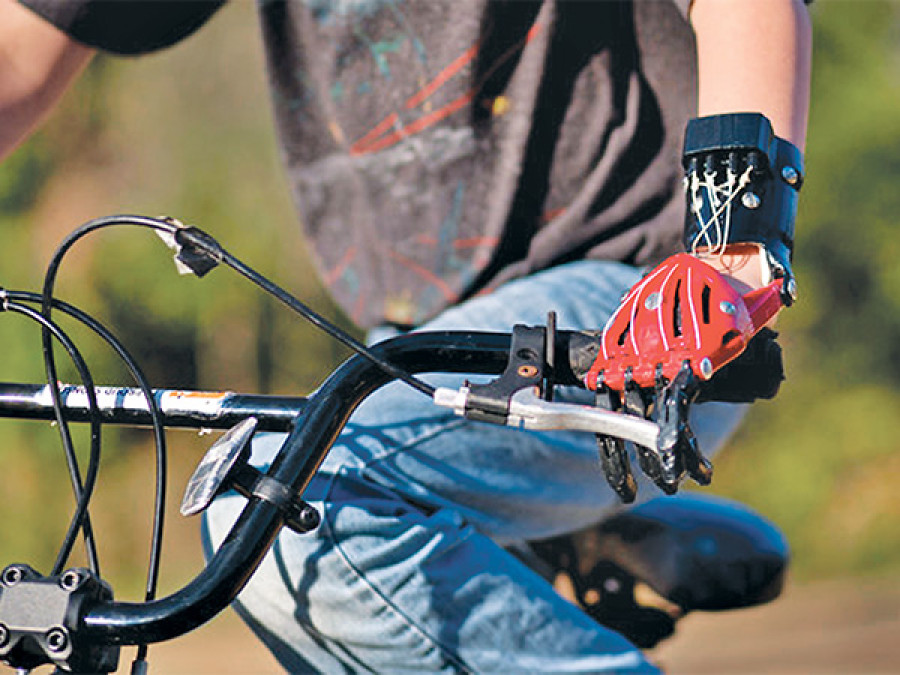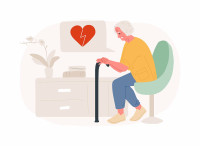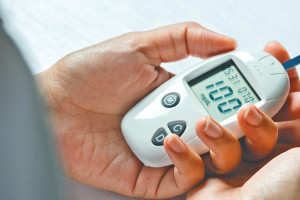Culture & Lifestyle
Hand of a Superhero
Dawson Riverman’s parents tried to help him make the best of it.
Jacqueline Mrozfeb
Dawson Riverman’s parents tried to help him make the best of it.
Born without fingers on his left hand, Dawson struggled to perform even the simplest tasks, like tying his shoes or holding a ball. “God made you special in this way,” his parents told him. But by age 5, Dawson was demanding tearfully to know why.
The Rivermans, of Forest Grove, Ore., could not afford a high-tech prosthetic hand for their son, and in any event they are rarely made for children. Then help arrived in the guise of a stranger with a three-dimensional printer.
He made a prosthetic hand for Dawson, in cobalt blue and black, and it did not cost his family a thing. Now the 13-year-old can ride a bike and hold a baseball bat. He hopes to play goalkeeper on his soccer team.
“He’s realising he can do things with two hands and not have to try to figure out how do them,” said his mother, Dawn Riverman.
The proliferation of 3-D printers has had an unexpected benefit: The devices, it turns out, are perfect for creating cheap prosthetics. Surprising numbers of children need them: One in 1,000 infants is born with missing fingers, and others lose fingers and hands to injury. Each year, about 9,000 children receive amputations as a result of lawn mower accidents alone.
State-of-the-art prosthetic replacements are complicated medical devices, powered by batteries and electronic motors, and they can cost thousands of dollars. Even if children are able to manage the equipment, they grow too quickly to make the investment practical. So most do without, fighting to do with one hand what most of us do with two.
E-nable, an online volunteer organisation, aims to change that. Founded in 2013 by Dr Jon Schull, the group matches children like Dawson in need of prosthetic hands and fingers with volunteers able to make them on 3-D printers. Designs may be downloaded into the machines at no charge, and members who create new models share their software plans freely with others.
The materials for a 3-D-printed prosthetic hand can cost as little as $20 to $50, and some experts say they work just as well, if not better, than much costlier devices. Best of all, boys and girls usually love their DIY prosthetics.
They are not designed to look like replacement parts. One popular model, the Cyborg Beast, looks like a limb from a Transformer. The Raptor Hand and Talon Hand 2.X do not suggest disability; they hint at comic-book superpowers. And they are not made to be hidden—indeed, they can be fabricated in a variety of eye-catching fluorescent colors, or even made to glow in the dark.
The fingers are closed by flexing the wrist, which pulls on cable “tendons.” Move the wrist again, and the hand opens. The hands are printed in pieces, which are assembled by volunteers, or by parents and children themselves.
More than 50 groups, such as Boy Scout and Girl Scout troops and schools like Convent of the Sacred Heart in Manhattan, have created hands for about 500 children.
“We have several thousand people on our site who are asking to help make hands,” said Dr Schull, a research scientist at the Rochester Institute of Technology. “What could be more rewarding than using your 3D printer to make a hand for someone?”
An online tool on the E-nable website, the Handomatic, is used to fit the prosthesis to the child. A parent enters a series of measurements, and the tool spits out a custom design for the child that can be downloaded into the printer.
Each hand takes about 20 hours to print and another two or three hours to assemble. Assembly tutorials are available on YouTube.
It is not much harder than putting together a complex Lego kit, said Ivan Owen, one of the inventors of the 3-D printed hands, who made Dawson’s hand. “We released the designs into the public domain so there’d be no patent and everyone could do whatever they wanted with it,” he said. “So many people contributed their time to improve on the initial design. I feel blessed.”
These days, some leading experts in 3-D design are now collaborating with E-nable on improved prostheses for children. The hands are lightweight, less than a pound, but the fingers move together, not separately.
And they do not work for every child: Those with midarm amputations, for instance, usually must been seen by a professional prosthetist.
More often, though, the children are like Ethan Brown, 8, who was born with two fingers missing on his left hand. Now he wears a Cyborg Beast in black and red, his school colors.
“It looks even cooler than the picture, ” he said. “It looks like Ironman or Spider-Man.”
He was once teased for his disability, said his mother, Melina Brown, who now volunteers for E-nable. “Now he’s different in a cool way, and the other kids say they want a new hand, too.”
Health care providers are beginning to take note. In September, Johns Hopkins Hospital in Maryland and E-nable hosted their first 3-D printing conference involving the medical community, volunteers, recipients and manufacturers. The hospital has purchased a 3-D printer and has begun printing free prosthetic devices for children.
“Anyone can get one of these hands—it doesn’t matter what insurance or health provider you have,” said Dr Albert Chi, an assistant professor of surgery at Johns Hopkins Medicine. “To be able to provide such a functional tool for anyone with congenital hand or limb loss, it kind of brings you to tears a little bit.”
—©2015The New York Times




 11.12°C Kathmandu
11.12°C Kathmandu















